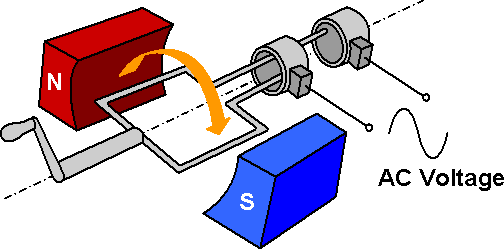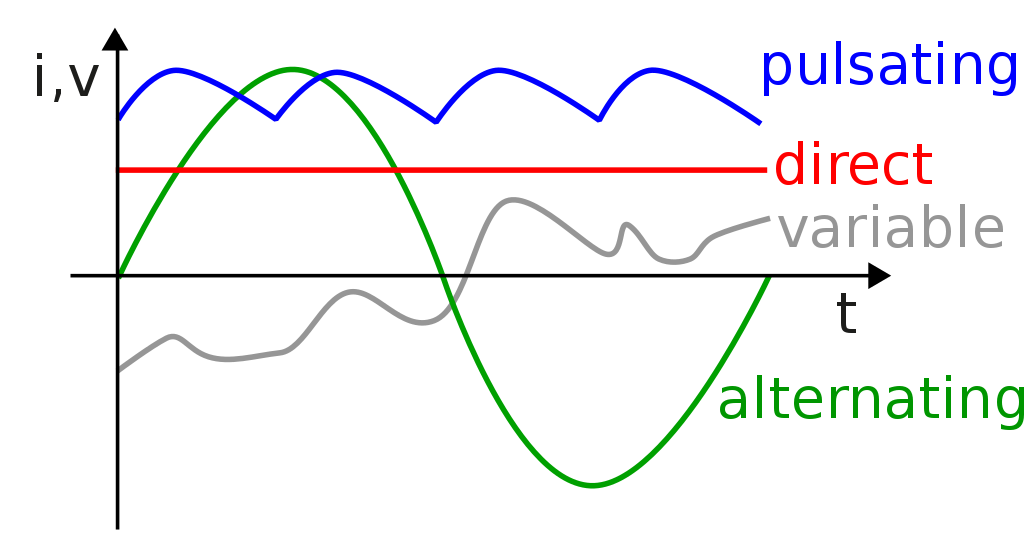
Most of the world's electrical power is generated using electrical generators.
Generators convert rotational kinetic energy (usually powered by a turbine) into electrical energy using electromagnetic induction.
Key Concepts
A basic AC generator operates by the rotation of a coil within a magnetic field. This diagram shows the coil being rotated by a handle, which could represent a turbine.

The left side of this coil is moving upwards. The magnetic field direction is from north to south. Using Fleming's right hand rule, we can determine that a current would be induced in the direction away from the handle. The converse is true for the right side of the coil.
When the coil has rotated 90o, the motion of the sides will be parallel to the field lines. No current is induced.
After a 180o rotation, the current will again be maximised, but the direction around the coil will be opposite to its initial direction. The slip rings enable the coil to spin continuously and for this alternating current to be transmitted.
Because alternating current has equal magnitudes and equal times in opposite directions, the true mean average potential difference and current are zero. However, clearly the electrical power generated can be transmitted and used.
We therefore use another type of average, root mean square:
\(I_\text{rms}={I_0\over \sqrt2}\)
- \(I_\text{rms}\) is the root mean square current (A)
- \(I_0\) is the maximum magnitude of the current in either direction (A)
\(V_\text{rms}={V_0\over \sqrt2}\)
- \(V_\text{rms}\) is the root mean square potential difference (V)
- \(V_0\) is the maximum magnitude of the potential difference (V)
The definition of Resistance is unchanged; it is the ratio of the potential difference across a conductor to the current flowing through it at an instant:
\(R={V_0\over I_0}={V_\text{rms}\over I_\text{rms}}\)
- \(R\) is the resistance (\(\Omega\))
The electrical power produced is the product of the current and voltage. For maximum power, when the rotation of the coil is perpendicular to the magnetic field:
\(P_\text{max}=I_0V_0\)
- \(P_\text{max}\) is the maximum power (W)
The average power is the product of the root mean square current and potential difference:
\(\bar{P}={I_0\over \sqrt2}{V_0\over \sqrt2}\)
\(\Rightarrow\bar{P}={1\over 2}I_0V_0\)
- \(\bar{P}\) is the average power (W)
All of these equations are found in the data booklet and can be used to solve problems for an AC circuit.
How much of AC generators have you understood?



 Twitter
Twitter  Facebook
Facebook  LinkedIn
LinkedIn